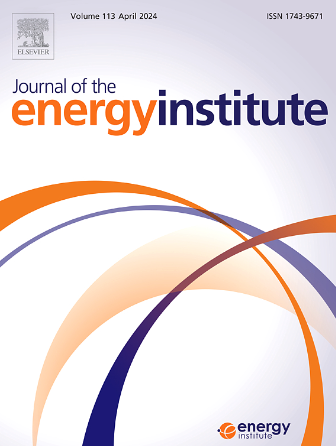氨的加入对1-丁烯热解中烟灰和前驱体形成的影响:从固体颗粒的角度看
IF 5.6
2区 工程技术
Q2 ENERGY & FUELS
引用次数: 0
摘要
氨是一种零碳富氢燃料,有可能调节烟尘颗粒的排放。本文研究了不同气体流速下1-丁烯/氨共热解过程中烟尘纳米结构及其反应性演变。采用透射电镜和拉曼光谱对烟尘形貌和纳米结构进行表征,采用热重分析对烟尘的反应性进行评价,采用x射线光电子能谱和元素分析对烟尘的化学成分进行研究。结果表明:气体流速和氨含量的增加均导致初级颗粒直径减小,其条纹长度与气体流速呈负相关,而掺加NH3对结构参数无明显影响。增大气体流量可以减少烟尘在高温反应区内的停留时间,从而增强烟尘的氧化反应活性。含氮物质的引入耗尽了烟灰形成的有效碳源,并通过与碳层中的缺陷碳结合使反应位点失活,从而抑制了烟灰的表面生长。嵌入烟尘颗粒中的氮原子主要以吡啶的形式存在。添加氨对烟尘反应性的抑制作用取决于适当的气体停留时间。结合前人的工作,进一步发展了氨的加入对气态烟尘前驱体和固体颗粒形成的耦合关系。本文章由计算机程序翻译,如有差异,请以英文原文为准。
Effects of ammonia addition on soot and precursors formation in 1-butene pyrolysis: View from solid particles
Ammonia, a zero-carbon and hydrogen-rich fuel, has the potential to regulate the emission of soot particulates. In this work, soot nanostructure and related reactivity evolution in 1-butene/ammonia co-pyrolysis at various gas flow rates were investigated. Transmission electron microscopy and Raman spectroscopy were adopted to characterize soot morphology and its nanostructure, thermogravimetric analysis was used to evaluate soot reactivity, and X-ray photoelectron spectroscopy and elemental analysis were employed to investigate soot chemical composition. Results revealed that increasing gas flow rate and ammonia content both led to a decrease in primary particle diameter, whose fringe length was negatively correlated with the gas flow rate, while blending NH3 had no obvious impact on structural parameters. Rising gas flow rate enhanced the soot oxidation reactivity by reducing its residence time in the high-temperature reaction region, where it did not undergo sufficient carbonization. The introduction of nitrogen-containing species depleted available carbon source for soot formation, and deactivated the reaction sites by binding with the defective carbon in the carbon layer, thus inhibiting the surface growth of soot. Nitrogen atoms embedded in the soot particles were predominantly found in the form of pyridines. The inhibitory effect of added ammonia on soot reactivity depended on adequate gas residence time. The coupling relationship of gaseous soot precursors and solid particles formation with ammonia addition has been further developed in conjunction with the previous work.
求助全文
通过发布文献求助,成功后即可免费获取论文全文。
去求助
来源期刊

Journal of The Energy Institute
工程技术-能源与燃料
CiteScore
10.60
自引率
5.30%
发文量
166
审稿时长
16 days
期刊介绍:
The Journal of the Energy Institute provides peer reviewed coverage of original high quality research on energy, engineering and technology.The coverage is broad and the main areas of interest include:
Combustion engineering and associated technologies; process heating; power generation; engines and propulsion; emissions and environmental pollution control; clean coal technologies; carbon abatement technologies
Emissions and environmental pollution control; safety and hazards;
Clean coal technologies; carbon abatement technologies, including carbon capture and storage, CCS;
Petroleum engineering and fuel quality, including storage and transport
Alternative energy sources; biomass utilisation and biomass conversion technologies; energy from waste, incineration and recycling
Energy conversion, energy recovery and energy efficiency; space heating, fuel cells, heat pumps and cooling systems
Energy storage
The journal''s coverage reflects changes in energy technology that result from the transition to more efficient energy production and end use together with reduced carbon emission.
 求助内容:
求助内容: 应助结果提醒方式:
应助结果提醒方式:


